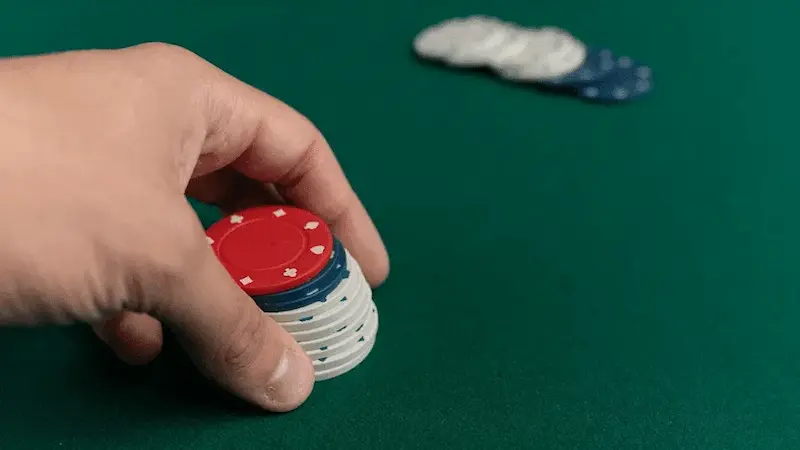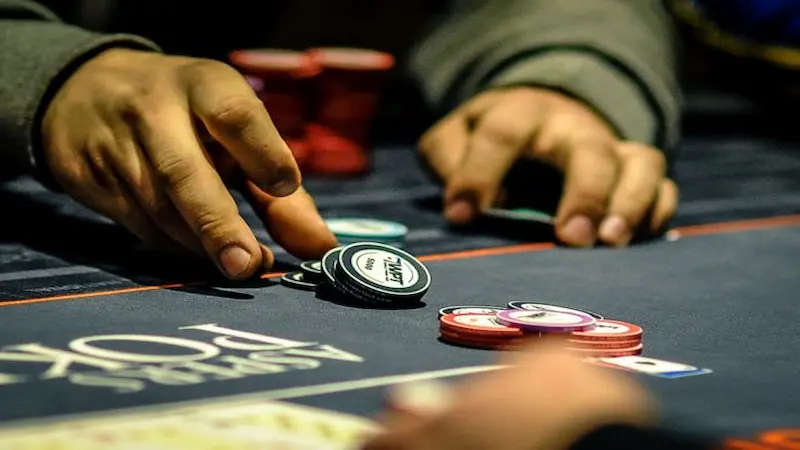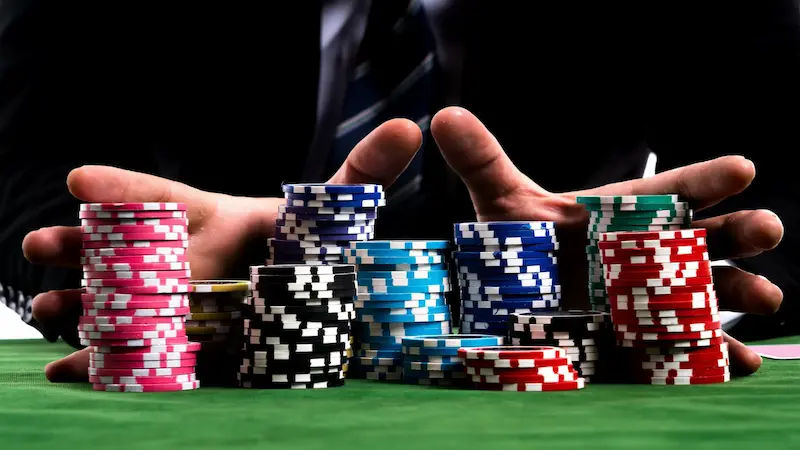After mastering the rules of Poker, one important thing you need to know is when and why you should betting in Poker.
If you ask a beginner why they bet, the usual answer would be, “You should bet when you think you have the best hand.” However, betting in Poker is not that simple.
Every time you bet in Poker, you must answer the question of why you are betting. Today, 100JILI will show you the purposes of betting. Let’s follow along.
General Idea

You can determine the type of bet based on the equity in the hand. For example, if you determine your hand is ahead, you’re betting for value. If you believe your hand is losing, you’re betting as a bluff.
Example of a Hand
Both players have 100 big blinds. You open raise 3bb from the CO (Cut-off) position with K♠1♣. The BU calls, SB folds, and BB folds.
The flop comes K♦10♦6♣. You continue betting (c-bet) 5bb into a 7.5bb pot. The BU calls.
(This is a good spot to c-bet for additional value on the flop. There will be many weaker hands in your opponent’s range that will call. The opponent might call with weaker kings or drawing hands like straight or flush draws. Sometimes the opponent may have KT or a small pair and could raise in this situation.)
The turn brings 7♣, and you bet 14bb into a 17.5bb pot. The BU calls.
(This card doesn’t change much in the situation. There could be a few more draws with hands like QJ, 98, or AT. The fact that the opponent called on the flop doesn’t necessarily mean you’re behind, and this is a good opportunity to bet again for value, extracting a decent amount from draws or weaker kings.)
The river brings 9♦, and you check.
(This is a really bad card for you, as it completes many of the opponent’s draws like JQ or flush draws with the 9♦. If the opponent completed their draw, they will beat you. If the opponent didn’t complete their draw, they will likely fold if you bet the river. There is a very low chance they will call with hands like KQ or KJ on the river. Therefore, it’s not a good spot to bet on the river.)
Betting in Poker with Bluffs
You think you likely have the weaker hand, but you believe you can make your opponent fold and profit. Unlike a value bet, the success rate of a bluff bet in Poker must be higher than the risk you are taking. The less risky your bluff, the more profit you will make.
People often imagine bluffing as going all-in with a big stack on the river, but the truth is you can bluff in every round.
In fact, skilled poker players often bluff frequently on the flop. A small continuation bet on the flop is one of the most common bluffing techniques.
Bluff Example:
Both players have 100 big blinds. You open raise 3bb from the button with 5♣6♣. SB calls, and BB folds.
The flop comes K♠7♣2♦. SB checks, and you bet 3bb into a 7bb pot.
(This is a good spot for a continuation bet as a bluff. It’s a dry flop with one high card, making it unlikely for your opponent to continue with many hands. Even hands like 55 or 67 will feel uncomfortable continuing with a K on the board.)
You need to size your bet appropriately here. In this situation, a bet smaller than half the pot is enough. Although it seems small, it is enough to make your opponent fold. Imagine you held AK and wanted to bet for value – you would still bet similarly.
By betting 3bb, you need to succeed in bluffing 30% of the time. If you bet 7bb, you would need to succeed 50% of the time.
Semi-Bluff

Similar to bluffing, but you have some outs that may help you win the hand. The success rate of the bluff can be lower since you can still hit your draw and win the hand if called.
Semi-Bluff Example:
Both players have 100 big blinds. You open raise 3bb from the SB with 5♣6♣. BB calls.
The flop comes K♠7♣2♦. You bet 3bb into a 6bb pot, and BB calls.
The turn brings 3♣. You bet 9bb into a 12bb pot.
(This is a card that increases your winning chances. The opponent will fold with many hands like AJ, small pairs when double-barreled. Even if the opponent holds Kx or a set, you still have the potential to win with a straight or flush draw. You now have both fold equity and pot equity.)
Protection

You bet to extract a bit of thin value with medium-strength hands.
Protection Example:
Both players have 100 big blinds. You open raise from the CO with 4♦4♣. SB calls, BB folds.
The flop comes K♦7♣3♠. You bet 4bb into a 7bb pot.
(By betting, you are protecting your hand against any overcards. You don’t want the opponent to check and hit an overcard on the turn or river for free. Sometimes the opponent will fold a hand like a pair of sevens. Forcing the opponent to fold hands stronger or weaker than yours makes the bet profitable. Betting also reduces the chance of getting bluffed on the turn and river.)
With this article, you now understand the purpose of betting in Poker.
